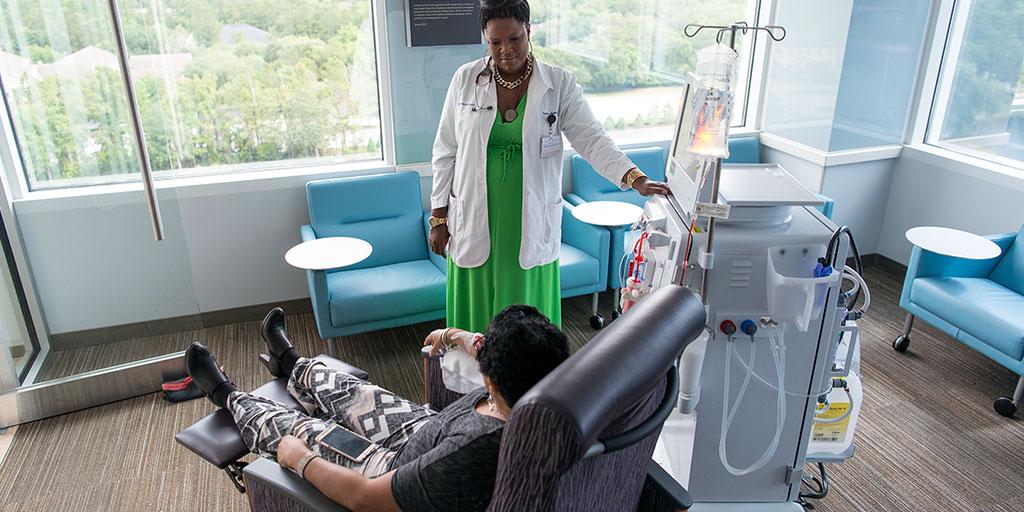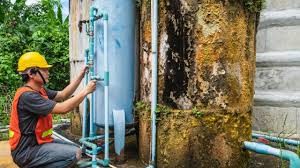Stories you may like
Hemodialysis Technician
A hemodialysis technician operates and maintains dialysis machines to filter blood for patients with kidney failure, working under the supervision of nurses and doctors. Key responsibilities include preparing equipment, monitoring patients during treatment, performing routine maintenance on machines and water systems, documenting treatments, and providing patient education and support.
Key Responsibilities
- Patient Care & Monitoring:
- Monitor patients' vital signs and overall condition before, during, and after dialysis treatments.
- Alert nurses or doctors to any changes or signs of a medical emergency.
- Provide emotional support and answer patient questions.
- Equipment & Environment:
- Assemble and prepare dialysis machines for treatment.
- Ensure machines and water treatment systems are functioning correctly and are sterile.
- Perform routine maintenance and cleaning of dialysis equipment.
- Monitor and test water quality for dialysis treatments.
- Treatment Administration:
- Initiate, monitor, and terminate hemodialysis treatments under the supervision of a Registered Nurse.
- Adjust treatment parameters as needed to ensure patient safety.
- Documentation & Communication:
- Accurately record patient data and treatment details in patient charts or electronic health records.
- Communicate effectively with nurses, doctors, and other team members.
- Patient Education:
- Educate patients and their families on the dialysis process and important health information.
Work Environment
- Hemodialysis technicians work in a variety of settings, including hospitals, specialized dialysis centers, and clinics.
Required Skills & Attributes
- Strong communication and interpersonal skills.
- Attention to detail and ability to follow procedures.
- Ability to work effectively in a collaborative healthcare team.
- Compassion and sensitivity to the needs of patients.
What does a hemodialysis technician do?
Hemodialysis technicians, also known as dialysis technicians, work together with a doctor or nurse to provide patient care to people with permanent kidney failure (end-stage renal disease).
Kidney dialysis removes metabolic waste from the blood. This is typically the job of the kidneys, but when the kidneys do not work, kidney dialysis is a necessary treatment for a patient.
Scope of practice
During dialysis, the technician monitors the dialysis machines and patient’s vital signs.
Their typical roles and responsibilities include:
- Monitoring patients as they undergo dialysis
- Assisting with any patient questions or concerns
- Educating patients on dialysis
- Maintaining dialysis machines and equipment
- Cleaning dialysis machines and equipment
Work environment
Hemodialysis technicians work in hospitals, clinics, and dialysis centers under the supervision of a registered nurse or physician. Typically, hemodialysis technicians spend most of their shifts standing and making rounds to several patients.
While every workplace is different, hemodialysis technicians generally work a variety of shifts and hours. While some may choose to work regular daytime shifts, others may choose to work 12-hour shifts. There is flexibility in this career.
Becoming a hemodialysis technician
After high school, the typical pathway to becoming a hemodialysis technician includes a certificate training program and patient care experience.
Higher education requirements
To become a hemodialysis technician, you'll need to first complete a hemodialysis technician certificate program. These programs contain classroom learning and hands-on experience.
Hemodialysis Technician
A hemodialysis technician operates and maintains dialysis machines to filter blood for patients with kidney failure, working under the supervision of nurses and doctors. Key responsibilities include preparing equipment, monitoring patients during treatment, performing routine maintenance on machines and water systems, documenting treatments, and providing patient education and support.
Key Responsibilities
- Patient Care & Monitoring:
- Monitor patients' vital signs and overall condition before, during, and after dialysis treatments.
- Alert nurses or doctors to any changes or signs of a medical emergency.
- Provide emotional support and answer patient questions.
- Equipment & Environment:
- Assemble and prepare dialysis machines for treatment.
- Ensure machines and water treatment systems are functioning correctly and are sterile.
- Perform routine maintenance and cleaning of dialysis equipment.
- Monitor and test water quality for dialysis treatments.
- Treatment Administration:
- Initiate, monitor, and terminate hemodialysis treatments under the supervision of a Registered Nurse.
- Adjust treatment parameters as needed to ensure patient safety.
- Documentation & Communication:
- Accurately record patient data and treatment details in patient charts or electronic health records.
- Communicate effectively with nurses, doctors, and other team members.
- Patient Education:
- Educate patients and their families on the dialysis process and important health information.
Work Environment
- Hemodialysis technicians work in a variety of settings, including hospitals, specialized dialysis centers, and clinics.
Required Skills & Attributes
- Strong communication and interpersonal skills.
- Attention to detail and ability to follow procedures.
- Ability to work effectively in a collaborative healthcare team.
- Compassion and sensitivity to the needs of patients.
What does a hemodialysis technician do?
Hemodialysis technicians, also known as dialysis technicians, work together with a doctor or nurse to provide patient care to people with permanent kidney failure (end-stage renal disease).
Kidney dialysis removes metabolic waste from the blood. This is typically the job of the kidneys, but when the kidneys do not work, kidney dialysis is a necessary treatment for a patient.
Scope of practice
During dialysis, the technician monitors the dialysis machines and patient’s vital signs.
Their typical roles and responsibilities include:
- Monitoring patients as they undergo dialysis
- Assisting with any patient questions or concerns
- Educating patients on dialysis
- Maintaining dialysis machines and equipment
- Cleaning dialysis machines and equipment
Work environment
Hemodialysis technicians work in hospitals, clinics, and dialysis centers under the supervision of a registered nurse or physician. Typically, hemodialysis technicians spend most of their shifts standing and making rounds to several patients.
While every workplace is different, hemodialysis technicians generally work a variety of shifts and hours. While some may choose to work regular daytime shifts, others may choose to work 12-hour shifts. There is flexibility in this career.
Becoming a hemodialysis technician
After high school, the typical pathway to becoming a hemodialysis technician includes a certificate training program and patient care experience.
Higher education requirements
To become a hemodialysis technician, you'll need to first complete a hemodialysis technician certificate program. These programs contain classroom learning and hands-on experience.





User's Comments
No comments there.